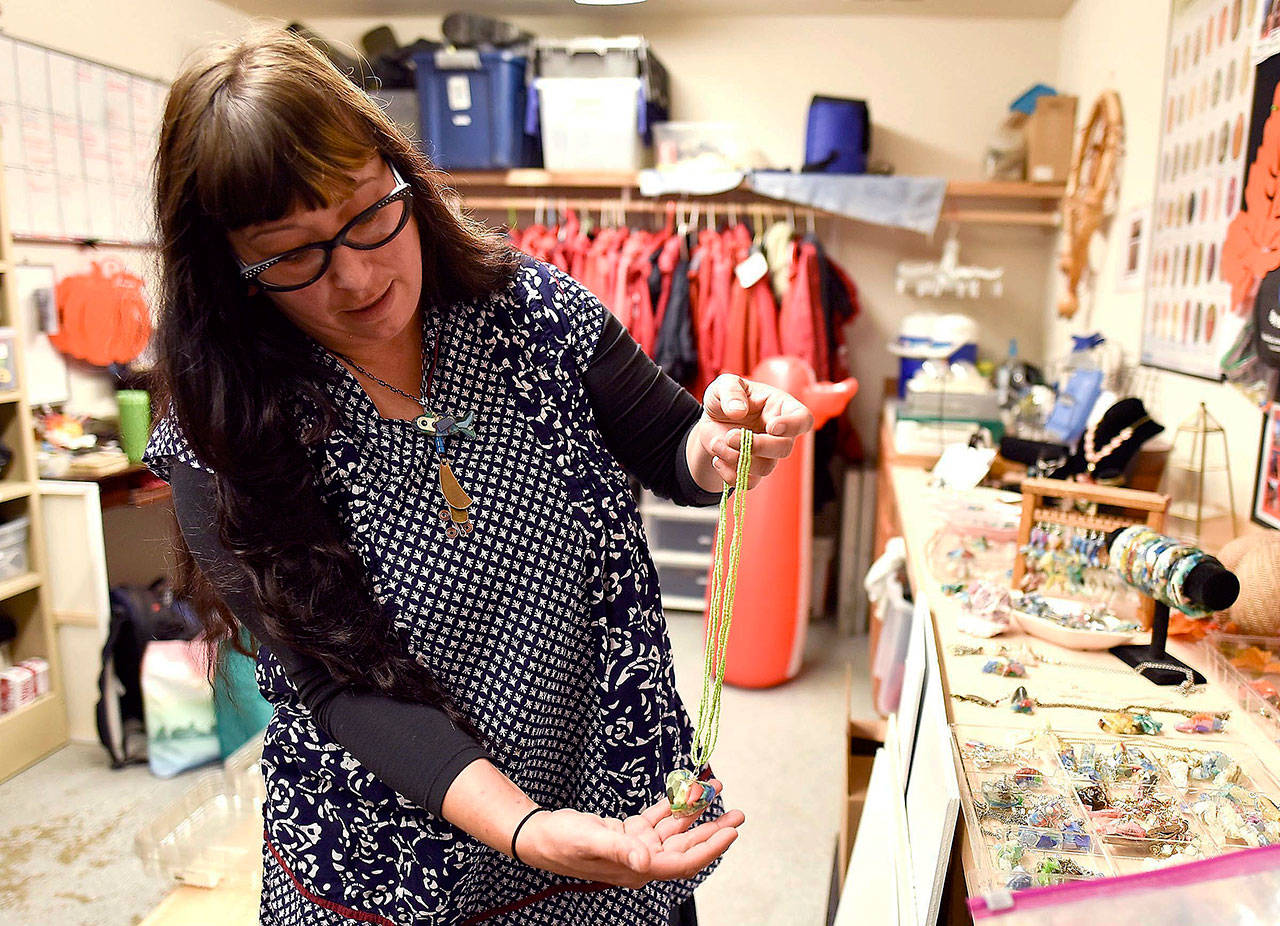By Brenna Visser / The Daily Astorian
CANNON BEACH, Ore. — As far as trash is concerned, the microplastics speckling the beaches of the Oregon Coast are some of the prettiest around.
“They look kind of pretty, and that’s the problem,” said Pooka Rice, the outreach coordinator for the Haystack Rock Awareness Program. “Because the birds and the fish also think they are pretty.”
Microplastics are extremely small pieces of debris broken down from larger waste in the ocean, coming in a variety of colors and often mistaken for sea glass.
Earlier this year, more than 240 pounds was filtered from the sand in front of Haystack Rock. The National Oceanic and Atmospheric Administration estimates 100 million tons of this debris fill the ocean, affecting thousands of sea turtles, seabirds, fish and other marine life that ingests it.
Rice decided to tap into her artistic background and repurpose the plastics’ pretty quality into jewelry. What started as a fun experiment now has blossomed into more than 100 pieces of art created by the program’s staff, who together have crafted a variety of mermaid tail earrings, shell necklaces and turtle pendants encased in clear resin.
The goal is to start selling the jewelry at local art galleries and shops as a way to consistently raise money, as well as awareness about the issue.
“Rather than going to a landfill, we wanted to turn (the plastic) into a vehicle for conversation,” Rice said. “When visitors come, it’s not only an opportunity for environmental education, but a positive, tangible reminder that you can make a difference.”
Haystack “really, really bad”
The presence of microplastics on beaches around the world has been steadily increasing for the past six years, said Marc Ward, the director of the environmental nonprofit Sea Turtles Forever.
Ward, who often leads beach cleanup efforts in Cannon Beach, has been researching marine plastics for more than 20 years. In that time he started to see the prevalence of the material in the digestive tracts of sea turtles.
But he didn’t realize the severity until he returned to the coast from a research trip six years ago to find the beaches he loves — like Oswald West and Crescent Beach — covered in the tiny plastics.
“I’ve been on the beach all my life. I was a surfer — I know every beach in this state. I also know we never had microplastics before,” he said. “I take my kids to the beach, and when I saw my baby with microplastic in his mouth I knew something had to be done about this.”
Since then, Ward has facilitated countless surveys, developed a microplastic screening system and organized more than 100 beach cleanup events up and down the West Coast.
Microplastics are detrimental to beaches because of the toxins they accumulate.
“You get a bottle. It’s dropped in the ocean. The UV light from the sun breaks it down and makes it brittle. Then it breaks up into small pieces,” Ward said. “It never biodegrades, they just get smaller and smaller. It’s then when they absorb these chemicals — which are often carcinogenic — through broken edges and surfaces and keep concentrating them. Left alone, you could have a contaminated beach.”
The mile in front of Haystack Rock is “really, really bad,” Ward said, where he has consistently surveyed more than 100 grams of microplastics per square meter. Some beaches, like Crescent Beach at Ecola State Park, had the amount of microplastics quadruple in three years of surveying.
Generally, he said, it’s dangerous to not clean out any section of sand more than 50 grams per square meter. How the currents work and the geography of the North Coast are partly to blame for why the volume is dense, Ward said.
This issue affects every part of the food chain, where almost a million seabirds and 66 percent of marine life are ingesting microplastics, according to NOAA statistics. But people can also ingest it by building a fire on the beach and inhaling chemicals from the burning plastics.
Disposing of and creating less plastic is ultimately needed to eliminate these issues, but volunteering at beach cleanup events to screen plastics out of the sand is a big way to start, Ward said.
“Sometimes it feels like a hopeless situation. I’ve worked with thousands of people in Clatsop County and Tillamook County to clean these beaches, and they all leave with a great feeling of accomplishment,” Ward said. “They see we can actually do something about it.”
Becoming sustainable
Even with 100 pieces of jewelry made, the team has hardly made a dent in those 240 pounds of microplastics collected. But in this case, that might be good — interest in buying the pieces has surpassed Rice’s expectations.
“We’re trying to make this sustainable. We’ll need more volunteer involvement to keep up with the demand,” she said.
A website is set to launch next week offering pieces for sale, and people should expect seeing these creations around the county at local stores priced between $8 and $35, program coordinator Melissa Keyser said.
The goal is a steady form of revenue to make the program as independently sustainable as possible. The team also hopes to partner with the Cannon Beach Arts Association to hold more ecology-based art classes, as well as support more environmental education.
“We want this affordable and accessible, because we want to start larger conversations about sustainable consumption and practice with everyone,” Keyser said.
Talk to us
> Give us your news tips.
> Send us a letter to the editor.
> More Herald contact information.

























